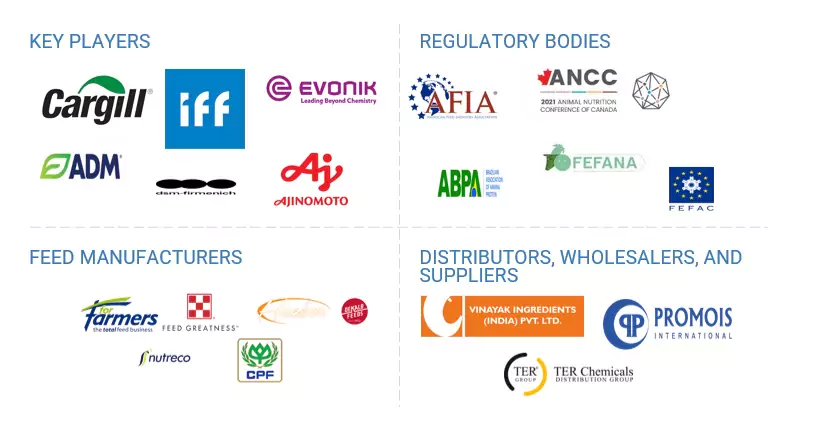The animal feed additives market is rapidly evolving as livestock producers and feed manufacturers seek innovative solutions to enhance animal health, nutrition, and overall farm efficiency. According to a recent MarketsandMarkets report, the animal feed additives market size is estimated at USD 45.54 billion in 2024 and is projected to reach USD 59.88 billion by 2029, growing at a CAGR of 5.6% during this period.
Key Factors Driving Growth
- Increased awareness of animal health and nutrition
- Rising consumer demand for high-quality meat, dairy, and aquaculture products
- Focus on sustainable agriculture and eco-friendly farming
- Innovations in feed formulations to improve productivity and efficiency
What Are Feed Additives and Why Do They Matter?
Feed additives are essential nutrients added to animal feed, including vitamins, minerals, amino acids, enzymes, and probiotics. They play a critical role in improving feed efficiency, boosting immunity, and supporting healthy growth in livestock, poultry, and aquaculture. With global demand for meat, dairy, and other animal products on the rise, the global animal feed additives market outlook highlights their increasing importance for sustainable farming practices.
For complete details, access your PDF copy here
Liquid Feed Additives Gain Momentum
Liquid feed additives are becoming a key growth segment due to their benefits such as improved feed mixing, enhanced nutrient absorption, and energy-efficient processing.
For example, Kemin Animal Nutrition and Health (US) launched MillSAVOR Liquid in 2022, designed to reduce energy use while improving pellet durability and starch gelatinization. This demonstrates how liquid solutions are reshaping the animal feed additives market.
The Rise of Natural Feed Additives
Growing consumer demand for organic and antibiotic-free animal products is fueling the adoption of natural feed additives. These include phytogenics, probiotics, enzymes, and vitamins derived from plants, fungi, bacteria, and essential oils.
Benefits of natural additives include:
- Improved gut health and digestibility
- Support for growth and immunity without synthetic chemicals
- Alignment with sustainable, antibiotic-free farming practices
Recent innovations include:
- Kemin AquaScience Pathorol (2023) – a phytogenic additive for shrimp health in Asia
- Amlan International’s mineral-based additives (2022) – enhancing poultry and livestock gut health
Europe Leads the Feed Additives Market
Europe remains a key region in the global animal feed additives market outlook. Despite some decline in traditional feed production, the region is advancing through innovation and sustainability initiatives.
Examples include:
- A 3.2% rise in pet feed production to 354,600 metric tons
- Major investments such as Evonik’s USD 26.5 million expansion in Germany and Nutreco’s USD 26.8 million feed plant in Nigeria
Key European players include Evonik Industries AG, BASF SE, dsm-firmenich, Novonesis Group, Adisseo, and Nutreco.
Leading Players in the Animal Feed Additives Industry
The animal feed additives market is highly competitive, with top companies shaping innovation and growth. Leading players include:
- Cargill, Incorporated (US)
- ADM (US)
- International Flavors & Fragrances Inc. (US)
- Evonik Industries AG (Germany)
- BASF SE (Germany)
- dsm-firmenich (Switzerland)
- Ajinomoto Co., Inc. (Japan)
- Novonesis Group (Denmark)
- Adisseo (France)
- Jubilant Ingrevia Limited (India)
- Nutreco (Netherlands)
- Kemin Industries, Inc. (US)
- Lallemand Inc. (Canada)
- BRF Global (Brazil)
- Alltech (US)
Future Outlook
The animal feed additives market size will continue to expand as livestock producers adopt innovative liquid and natural additives, meet regulatory standards, and align with sustainability goals. The global animal feed additives market outlook suggests that demand for antibiotic-free, environmentally responsible solutions will remain a major growth driver in poultry, livestock, and aquaculture production.
Frequently Asked Questions (FAQs)
- What are feed additives and why are they important in livestock farming?
Feed additives improve feed efficiency, immunity, and growth performance in animals. - What are the major types of feed additives?
Vitamins, minerals, amino acids, enzymes, probiotics, and phytogenics are the most common. - How do liquid feed additives differ from powdered forms?
Liquid additives enhance mixing, improve nutrient absorption, and reduce processing energy. - What are natural feed additives and why is demand rising?
They are plant-, mineral-, or bacteria-based alternatives that align with consumer demand for antibiotic-free products. - Which regions dominate the global animal feed additives market?
Europe leads, followed by Asia-Pacific and North America. - How is the animal feed additives market size expected to grow?
It is projected to rise from USD 45.54 billion in 2024 to USD 59.88 billion by 2029, at a CAGR of 5.6%.

